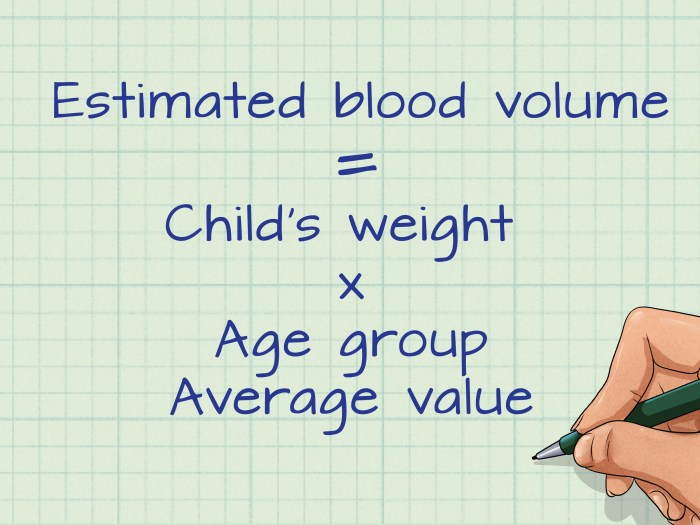Under what condition is hemorrhage severe enough to endanger life – Under what conditions does hemorrhage become severe enough to endanger life? This question lies at the heart of this comprehensive analysis, exploring the factors that determine hemorrhage severity, its clinical manifestations, and the critical emergency management strategies employed to prevent life-threatening complications.
As blood loss progresses, understanding the physiological responses and clinical signs associated with hemorrhage is paramount. This knowledge empowers healthcare professionals to make rapid and informed decisions, potentially saving lives.
Severity of Hemorrhage: Under What Condition Is Hemorrhage Severe Enough To Endanger Life

Hemorrhage is the loss of blood from the circulatory system. The severity of hemorrhage is classified based on the volume of blood loss and its impact on vital functions.
Mild hemorrhage causes minimal blood loss and has no significant impact on vital functions. Moderate hemorrhage involves blood loss of up to 15% of total blood volume and can cause tachycardia, hypotension, and mild confusion.
Severe hemorrhage, on the other hand, involves blood loss exceeding 15% of total blood volume. It can lead to life-threatening complications such as hypovolemic shock, organ failure, and death.
Factors Determining Severity
- Volume of blood loss:The greater the volume of blood lost, the more severe the hemorrhage.
- Location of bleeding:Hemorrhage from major blood vessels or organs can be more severe than bleeding from smaller vessels.
- Rate of bleeding:Rapid bleeding can lead to severe hemorrhage even if the total volume of blood loss is relatively small.
Life-Threatening Hemorrhages
- Aortic rupture:A tear in the aorta, the largest artery in the body, can cause massive hemorrhage and lead to rapid death.
- Gastrointestinal bleeding:Severe bleeding from the stomach or intestines can cause hypovolemic shock and electrolyte imbalances.
- Head injury:Trauma to the brain can result in intracranial hemorrhage, which can compress the brain and cause life-threatening complications.
Vital Signs and Hemorrhage
Monitoring vital signs is crucial in assessing the severity of hemorrhage.
Blood pressure:Hypotension, or low blood pressure, is a common sign of hemorrhage. Severe hemorrhage can cause a significant drop in blood pressure, leading to shock.
Heart rate:Tachycardia, or increased heart rate, is another sign of hemorrhage. The body compensates for blood loss by increasing the heart rate to maintain blood flow to vital organs.
Respiratory rate:Hyperventilation, or increased respiratory rate, can occur in response to hemorrhage. This is because the body attempts to increase oxygen delivery to tissues.
Pulse Oximetry and Capillary Refill Time, Under what condition is hemorrhage severe enough to endanger life
Pulse oximetry measures oxygen saturation in the blood. A low oxygen saturation level can indicate severe hemorrhage.
Capillary refill time is the time it takes for the skin to regain its color after pressure is applied. A prolonged capillary refill time can indicate poor perfusion and severe hemorrhage.
Clinical Manifestations of Severe Hemorrhage

Severe hemorrhage can cause a range of clinical signs and symptoms, including:
- Pallor:The skin and mucous membranes become pale due to reduced blood flow.
- Weakness:Fatigue and muscle weakness occur as the body compensates for blood loss.
- Confusion:Cerebral hypoperfusion can lead to confusion, disorientation, and impaired consciousness.
Case Study
A 55-year-old male presents to the emergency department with a stab wound to the abdomen. Upon examination, the patient is hypotensive, tachycardic, and pale. The patient’s capillary refill time is prolonged, and his oxygen saturation is 88%. These signs and symptoms indicate severe hemorrhage, and the patient requires immediate medical intervention.
Emergency Management of Severe Hemorrhage
Emergency management of severe hemorrhage involves:
- Controlling bleeding:Direct pressure should be applied to the wound to stop the bleeding.
- Maintaining airway and breathing:The patient’s airway should be secured, and oxygen should be administered as needed.
- Administering fluids:Intravenous fluids should be given to restore blood volume and maintain blood pressure.
Early intervention and aggressive treatment are crucial in preventing life-threatening complications.
Advanced Treatment Options for Severe Hemorrhage

Advanced treatment options for severe hemorrhage include:
- Surgical intervention:Surgery may be necessary to repair damaged blood vessels or remove the source of bleeding.
- Blood transfusions:Blood transfusions can replace lost blood volume and restore oxygen-carrying capacity.
- Embolization:Embolization involves injecting a material into the bleeding vessel to block the flow of blood.
Case Study
A 25-year-old female presents to the emergency department after a car accident. The patient is hypotensive and has a large laceration on her leg. The bleeding is controlled with direct pressure, and the patient is given intravenous fluids. However, the patient’s blood pressure remains low.
A CT scan reveals a ruptured popliteal artery. The patient undergoes emergency surgery to repair the artery and stop the bleeding.
Query Resolution
What are the most critical vital signs to monitor in severe hemorrhage?
Blood pressure, heart rate, and respiratory rate are the most critical vital signs to monitor, as they provide an indication of the body’s response to blood loss.
What are the immediate steps in managing severe hemorrhage?
The immediate steps include controlling bleeding, maintaining airway and breathing, and administering fluids. Early intervention is crucial to prevent life-threatening complications.
When is surgical intervention necessary in severe hemorrhage?
Surgical intervention is necessary when conservative measures fail to control bleeding or when the source of bleeding cannot be identified or accessed through less invasive methods.